Cannabis and Aromatherapy
Understanding how cannabis works, is not easy and people have barely started to begin to understand the properties of the different varieties of this plant. In some ways, you can say the cannabis prohibition in the United States for the last 80 years has been the dark ages. We don’t know the true history and understanding of this plant outside of the lies spread by the intimidated and closed-minded governments of the past. It is this mindset that only keeps us behind the curtain and without true insight. We are honestly only starting to understand the true potential. First it was THC, than CBD, followed by the confirmation of CB receptors in the human body which interacts with cannabinoids… we are only beginning to scratch the surface. So what are the other components of cannabis that can be identified and why should we care? Are they important?
Some other compound found in cannabis provide flavor and smell. For this topic, we will briefly discuss terpenes or the compounds which give different strains their unique smell.
It was the French perfumer and chemist, Rene-Maurice Gattefosse, who coined the term “aromatherapie” in 1937 with his publication of a book by that name. His book “Gattefosse’s Aromatherapy” contains early clinical findings for utilizing essential oils for a range of physiological ailments. It seems vital to understand what Gattefosse’s intention for coining the word was, as he clearly meant to distinguish the medicinal application of essential oils from their perfumery applications.
Aromatherapy is the practice of using the natural oils extracted from flowers, bark, stems, leaves, roots or other parts of a plant to enhance psychological and physical well-being. The inhaled aroma from these “essential” oils is widely believed to stimulate brain function. Essential oils can also be absorbed through the skin, where they travel through the bloodstream and can promote whole-body healing.
Known benefits of aromatherapy include its ability to reduce anxiety, ease depression, boost energy levels, speed up the healing process, eliminate headaches, boost cognitive performance, induce sleep, strengthen the immune system, reduce pain, improve digestion, and increase circulation. There are a wide number of essential oils available, each with its own healing properties.
How can we understand the therapeutic components of terpenes found in cannabis and leverage this knowledge to aid patients in need? Thankfully, the terpenes in cannabis are commonly found in other known plants and foods. There is more to cannabis than simply THC and CBD cannabinoids.
“The way to health is to have an aromatic bath, and scented massage every day…healing is a matter of time, but is sometimes also a matter of opportunity.” — Hippocrates, father of Western Medicine (460-377 BCE)
Terpenes found in Cannabis
With the assistance from the dispensaries and the Dabbin Dad Strain Database, a patient can attempt to identify the therapeutic preferences in individual strain offerings. If you ever questioned why the listed percentages appear to be low on some offering and not others, you are not alone. Currently, the extraction process for concentrates and vape oils are CO2 based, which strips more of the terpenes than other conventional extraction methods, such as cold-water or Butane.
Terpenes commonly found in CT Strain Offerings
α-Pinene: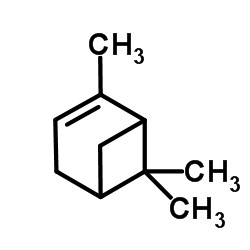
The alpha-pinene terpene is what gives an evergreen tree its unique, fresh scent, and in strains of cannabis, pinene is hard to miss for the same reason. It’s an unmistakable earthy scent that is reminiscent of an aromatic pine forest.
Usually regarded as something to simply enjoy as a scent, there have been medical studies that focus on the healing power of pine terpenes. Of all the terpenes, alpha pinene is the most widely encountered in nature — and one of the most powerful terpenes as well.
Not only do cannabis terpenes offer unique scent and flavor profiles, they give us hints to their own healing properties, and with pine terpenes, there are several amazing benefits to uncover.
Alpha-Pinene health benefits including:
- Anti-cancer properties
- Anti-inflammatory benefits
- Bronchodilator — especially when working in synergy with THC
- Broad spectrum antibiotic properties — highly effective against MRSA when working in synergy with the cannabinoids CBD and CBN
- Increases alertness and counteracts some of the ill-effects of THC such as anxiety
- Works to improve benefits with the entourage effect on cannabinoids like THC
- Can decrease oil production in overly oily skin
ß-Myrcene: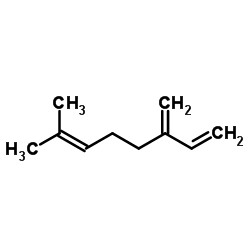
Myrcene is a monoterpene that is an essential precursor to forming other secondary terpenes and so forth. The compound has been known to compose up to 50% of the total terpene content found in individual strains. Strains containing more than 0.5% Myrcene are most likely to induce sedative effects classically attributed to indicas. Assists cannabinoids in absorbing into the blood brain barrier, binding to receptors in the endocannabinoid system, helping to encourage analgesic responses. Mangos, as well as hops, thyme, lemongrass and other plants all contain varying levels of myrcene.
Beta-Myrcene health benefits including:
- Chronic Pain
- Anti-inflammatory benefits
- Anti-cancer properties
- Antibiotic
- Sedative
- Antimutagenic
Limonene:
Limonene has a history in medicine, so it should come as no surprise that the limonene found in cannabis offers therapeutic benefits as well. Whereas THC levels typically makes up 10 to 20 percent of a flower’s biomass, limonene occurs in more trace amounts – generally from none at all to 1 to 2 percent. Some strains exhibit higher levels of limonene than others, and these levels can vary widely across harvests depending on the growing and curing process.
Limonene health benefits including:
- Elevated mood
- Stress relief
- Antifungal properties
- Antibacterial properties
- May help relieve heartburn and gastric reflux
- Improves absorption of other terpenes and chemicals by way of the skin, mucous membranes, and digestive tract
Ocimene: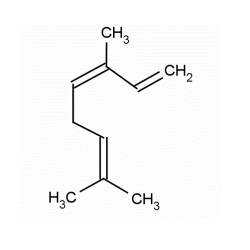
Ocimene is a monoterpene with a fruity, floral, some say wet cloth smell. It can be recognized by its sweet, fragrant, herbaceous, and woodsy aromas, which feature prominently in several perfumes, and which help plants defend themselves in their natural environment. Ocimene occurs naturally in botanicals as diverse as mint, parsley, pepper, basil, mangoes, orchids, kumquats, and of course cannabis.
Ocimene health benefits including:
- Antiviral properties
- Antifungal properties
- Antiseptic properties
- Decongestant
- Antibacterial properties
Linalool: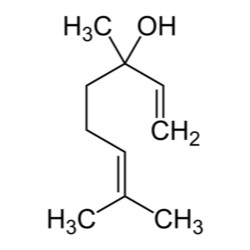
Linalool is a terpene alcohol with a citrusy, floral, sweet, bois de rose, woody, green, blueberry scent. Linalool is able to act on the opioidergic and cholinergic systems to relieve pain, a unique pathway for terpenes. Linalool also acts as an anticonvulsant, having similar effects to diazepam. Linalool has been used as a relaxant and as a treatment for anxiety for thousands of years. In scientific studies, linalool was proven to sedate mice and also mitigate anxiety.
Linalool health benefits including:
- Anti-anxiety
- Antidepressant
- Sedative
- Anti-inflammatory
- Anti-epileptic
- Analgesic
ß-Caryophyllene: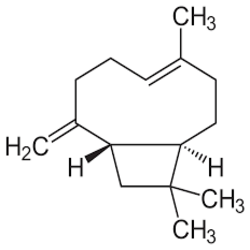
Beta-caryophyllene is a sesquiterpene, with a sweet, woody, spicy, clove-like smell. It is a unique terpene due to its large size and structure. Due to these properties, beta-caryophyllene is able to activate several receptors in the body, including CB2, which is usually activated most by CBD. beta-caryophyllene has been shown to be an effective analgesic by regulating neuroinflammation and thermal hyperalgesia. Also as an antioxidant, beta-caryophyllene is effective as demonstrated by [preventing lipid oxidation and scavenging other radicals. As and anti-inflammatory beta-caryophyllene has been proven to mediate kidney inflammation and its side effects. In addition, beta-caryophyllene has been eluted to be a gastric-protective.
ß-Caryophyllene health benefits including:
- Analgesic
- Anti-inflammatory
- Antioxidant
- Gastric-protective
Humulene:
Humulene is one of the main terpenes in hops, from which it gets its name. Humulene is also called alpha-caryophyllene. Like beta-caryophyllene, humulene is a cannabinoid and sesquiterpene, although it does not contain a cyclobutane ring. Humulene is a powerful anti-inflammatory and an anti-pain compound. It also has anti-cancer properties. Humulene is unique because, like THCv, it acts as an appetite suppressant, showing promise for weight loss treatments.
Humulene health benefits including:
- Anti-bacterial
- Anti-cancer
- Anti-inflammatory
- Insecticide
I understand that this can be difficult for some to understand and somewhat confusing to people. Some people can find this intimidating, but it doesn’t have too. Some people like to smoke, because they like to smoke and that is ok. If you want to benefit medically from cannabis, you don’t need to totally understand everything there is about each strain. Just understand that there is more than just THC. There are proven medical benefits of cannabis, but have have ever stopped to ask yourself if you are consuming the best way for yourself? People are not cookie-cutter and neither is cannabis, we still have a lot to learn.



